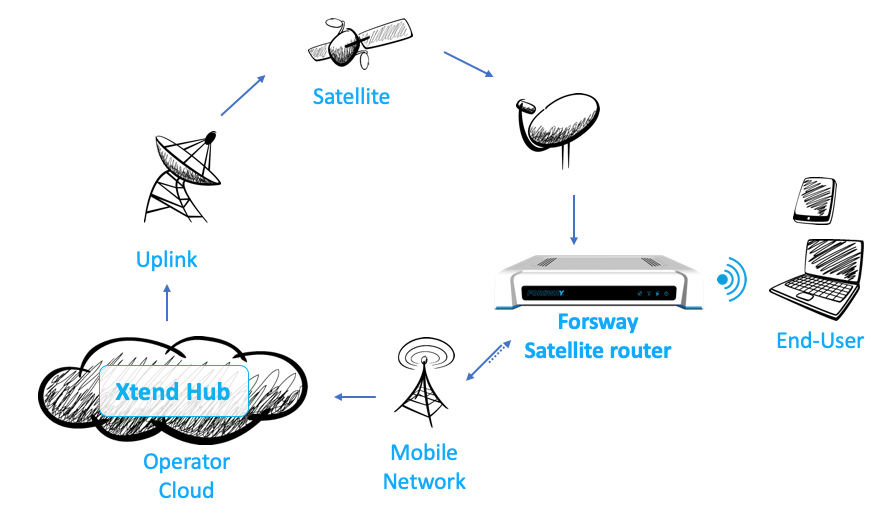-
StatusOngoing
-
Status date2020-03-04
-
Activity Code3A.101
The satellite industry’s current device-centric model to deploy new equipment and services creates long lead times related to shipping, customs, and installation – and an end result that is often challenging to integrate with other networks. For the past decade the mobile industry has moved away from this device-centric approach, switching focus to running network functions as virtual machines on standard servers with clearly defined interfaces between the network functions.
The objective of the project is transforming Forsway’s Xtend Hub to work in a cloud-based environment. Underlying objectives include enabling quick response times using software-only deployments, tight integrations with mobile operators’ core networks, and a higher pace of innovation by simplified upgrades – to create a highly future oriented service offering.
The overall aim is positioning Forsway to develop advanced connected vehicle solutions that efficiently combine satellite and terrestrial connectivity.
Key challenges
- Transforming the Xtend hub satellite hub from a device-centric architecture to a scalable microservice architecture.
- Creating a portable and reproducible way to deploy the full system in different cloud environments such as different operator clouds and public clouds.
- Creating a stable platform to deploy a private cloud for operators that has not yet started their own cloud operations
The Forsway Xtend System includes all features required by an operator of hybrid satellite/terrestrial services. Underserved users in emerging markets are already tapping the connectivity provided by the Xtend System, enabling users to get a broadband connection with low-cost Internet. The aim of the project is creating a simplified path for bringing Forsway’s solution for hybrid satellite/terrestrial connectivity to more users.
Employing a cloud-native approach is a key element of the Forsway cloud transformation initiative. Cloud-native principles are used to move beyond the traditional telco NFV architecture and embrace best-practices from the tech world. Project objectives include running the cloud based Forsway Xtend Hub as microservice on a Kubernetes platform. Using robust Kubernetes technology optimizes creation of highly a stable operations platform and enables numerous advanced infrastructure services such built-in high-availability, scalability and service orchestration - allowing for a high pace of innovation to meet continually evolving operator demands.
The Xtend hub incorporates cloud transformation while retaining all its unique features related to advanced hybrid satellite/terrestrial connectivity.
The cloud transformation brings a number of important features:
- Software-only deployment. If an existing operator cloud is in place with supporting RF capabilities, no additional hardware is needed to be deployed.
- Scalability. The system can quickly be scaled as users grows without waiting for new hardware to be delivered and deployed.
- Operations efficiency. By deploying on a cloud environment well known by the operations staff, management of the platform doesn’t need specialized training.
The system consists of two main parts: A satellite hub and hybrid routers.
The satellite hub, the Forsway Xtend Hub, is the main object of the cloud transformation in the project. The existing hub is transformed into a number cloud-native microservices (CNF) running inside a Kubernetes cluster. The hybrid router is a router with interfaces for both satellite and terrestrial communication links.

The project consists of one Definition phase and one Technology phase. The Definition phase includes activities to define system requirements, architecture, and test plans. The phase has one milestone, MTR, where the system requirements are frozen. The Technology phase includes the implementation and test parts of the project. The Technology phase includes one milestone, PDR, with the aim to ensure readiness to start final system testing.
The requirements elicitation and analysis for the project has been completed. The most critical parts of the system architecture, relating to general architecture and mobile network integration, has been completed. The work is now focusing on architectural details.



